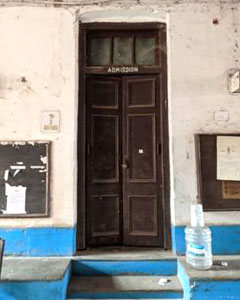
The Admission Room was where the inmates were admitted first. Their descriptive rolls were created and recorded after which they would be directed to other procedures of incarceration.
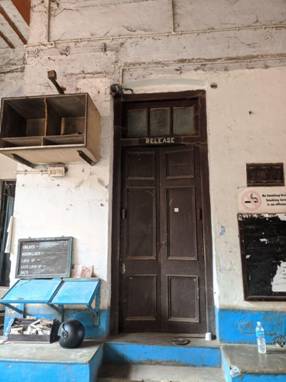
The Release Room was from where released inmates were set free, either after the completion of their term, or if they were exonerated after a judicial trial, after the completion of all necessary procedures

According to the West Bengal Correctional Services Act, 1992, the Chief Controller of Correctional Homes, subject to the control and supervision of the Superintendent, was in charge of the correctional home and the custodian of the prisoners and the properties of the prisoners and the correctional home.
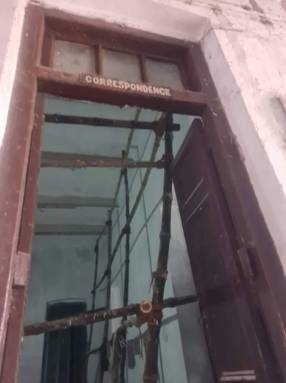
It is assumed that this is where all the books, newspapers, letters/ telegrams brought for or sent by the prisoners were censored and passed with a stamp if they were safe.
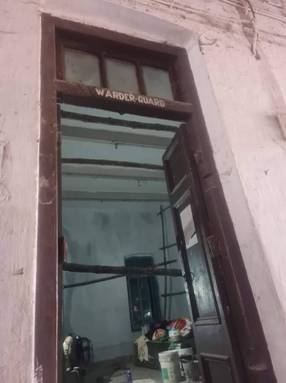
This room was allocated for the Warder/Guarder who kept watch over the inmates' activities and ensured the prison's security and discipline. He was responsible for maintaining order and daily operations of the facility and for the care, custody, and control of inmates.
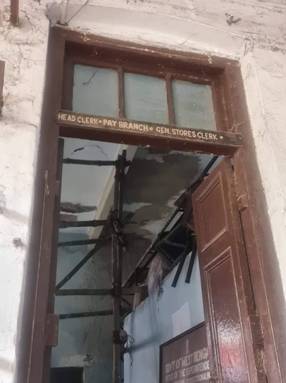
The head clerk supervised and approved with his stamp the bringing of books and newspapers that were brought for the prisoners. Supervision of Jail registers and the admission and release process also fell under the jurisdiction of this office.
It is assumed that the office of the pay branch used to disburse the payment against the labours given by jail inmates.
General store section was responsible for storing stationary and supplies.
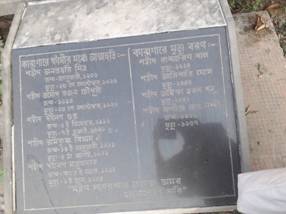
The Martyrs' Monument commemorates the sacrifice of those freedom fighters who were either executed at the gallows or those who perished within the premises of the Jail due to torture, suicide or after contracting an illness. An obelisk structure placed on a foundation with names of the martyrs inscribed on a plaque, the monument stands in memoriam of those who strove hard in the freedom struggle and sacrificed their lives.
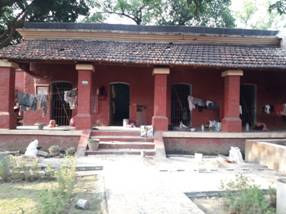
The first Prime Minister of India, Jawaharlal Nehru, was incarcerated in a cell of this building for 80 days from February 17 to May 7, 1934 by the British Government for his part in the Civil Disobedience Movement. His daughter, then Indira Nehru (later Indira Gandhi and a prime minister of India), is said to have visited him fortnightly for twenty minutes. It is believed the father and daughter would sit under the tree on the courtyard outside his cell.

The current Press building may have been built after 1910, but the institution of a Jail Press in Alipore (Presidency Jail) is one that dates from 1857. Starting out as a room for book binding, the present brick-red walled building is a sprawling two-storeyed building with many printing facilities. The Press possesses some of the oldest printing machines and is in operation till this date along with the modern age Shift-Fed Offset Machines, Plate-Making Machines, DTP finally Web-Offset Machines that were introduced in 1995.
The Patha Bhavan housed the Alipore Central Correctional Home's unique venture to educate the inmates and help them obtain their degrees. Study centres from higher educational institutions were set up here inside the jail in 2007 to help improve their lives.
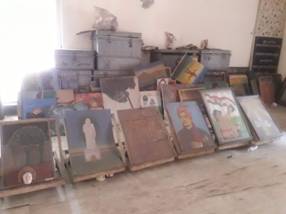
In tune with the Correctional Home being a place of redemption and growth, the Alipore Central Correctional Home also encouraged creative talents by setting up an art studio for their inmates. The inmates' works were frequently part of exhibitions and some were even up for sale at local or national fairs and festivals.

The chapel is now inside the Watchtower on the ground floor. It is believed that the government constructed the chapel outside the jail wards to maintain communal harmony. European inmates and prisoners of Christian faith could offer their prayers here.
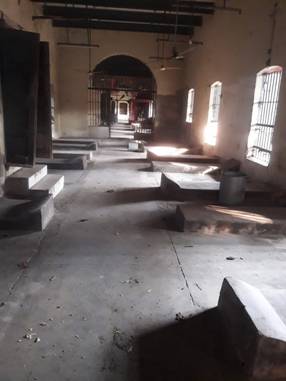
The General Wards reflect the attitude of the early colonial administrators when it came to prison houses. Despite cohabiting within the same ward, the inmates were discouraged from creating interpersonal bonds through conversations as can be seen through the placement of narrow stone-beds and head-rests. The cell interiors are divided with partition walls to ensure that no more than fifty prisoners were contained within each division. There were separate wards created for female and civil prisoners.
There were the classifications of ward and cell. The Alipore Central Jail was the barrack jail. It is assumed third-class prisoners were kept on the floor. Second Class prisoners (less dangerous political prisoners) were kept in beds made of cement, and high profile prisoners were kept in a separate cell. European prisoners were held in different wards.
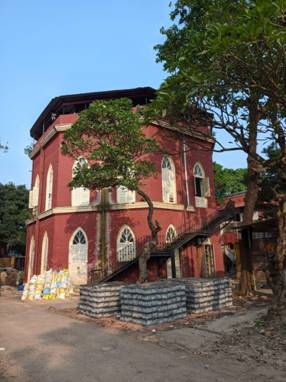
With radiating cells, wards and other structures in the layout of the Alipore Central Jail, the presence of a central watchtower for surveillance is of paramount importance. Putting a watchtower inside the jail emphasises control is known as the panopticon, as coined by the English philosopher Jeremy Bentham and influenced by the prison system of Ireland. Three prison walls were constructed around the prison cells leaving a space where a fourth wall would generally be, allowing all prisoners to be observed from a single watchtower with just a few security guards.
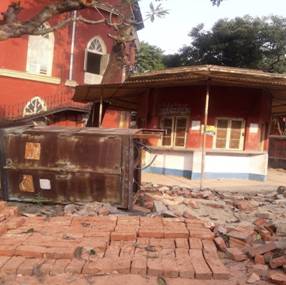
Situated in front of the watchtower building, the telephone booth seems to be a relic from the past. In a world where communication with the outer world was sparse and highly monitored, the telephone booth perhaps offered an outlet and hope for those in the jail to reach out and be in touch with a world beyond the jail confines.
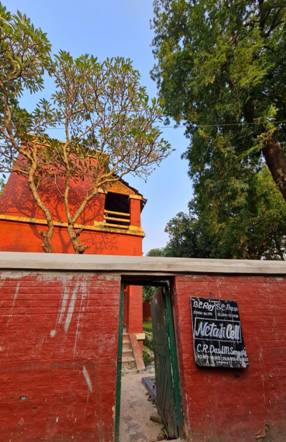
Includes cells which were inhabited by Subhash Chandra Bose, C.R.Das, Bidhan Chandra Roy, Jatindramohan Sengupta among several others.
Deshbandhu Cell: The first Mayor of Calcutta Municipal Corporation, Deshbandhu Chittaranjan Das was incarcerated in cell no. 8 of the first floor of this building in 1921 for his participation in the Non-cooperation Movement against the British Government.
Netaji Cell: Netaji Subhas Chandra Bose (1897-1945) was incarcerated in the cell of the building from January 23, 1930 to September 23, 1930 on the charge of Civil Disobedience.
Deshapriya Cell: Deshapriya Jatindra Mohan Sengupta, (1885-1933), Mayor of Calcutta Municipal Corporation, was incarcerated in cell 6 of the first floor of this building in April 1930 and again from October 22, 1932 to June 5, 1933.
Dr. B.C.Roy Cell: Dr. Bidhan Chandra Roy, the second Chief Minister of West Bengal, was incarcerated in cell no. 4 at the ground floor of Netaji Cell building from September 5, 1930 to January 1, 1931.
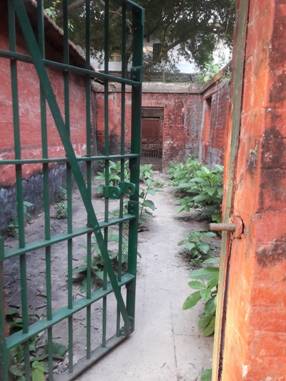
There are three such cells for death-row inmates. Brought here a day before their execution, the condemned cells are witness to the last hours and last thoughts of those condemned to the gallows. Sometimes before the hanging the sentenced prisoners were given Gita, foods and jail authorities tried to fulfil their last wish. It was reported in the Government report that a high dose sleeping tablet was given to Revolutionary Dinesh Gupta to relax him before his execution, but he did not sleep on that day.
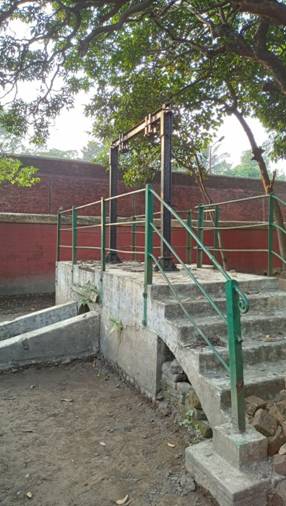
At these gallows, condemned prisoners were hanged. It is believed that few prisoners were kept in a building facing the gallows, so they could see their fellow prisoners being hanged. This is very common in colonial era capital punishment process. Notable martyrs include Anantahari Mitra (1926), Promod Ranjan Chowdhury (1926), Dinesh Gupta (1931), Ramkrishna Biswas (1931) and Dinesh Mazumdar (1934) who were hanged at this very spot. The gallows present a grim and contemplative picture.
On Martyrs' Day (January 30), veteran freedom fighters and students offer their homage by placing floral wreaths at the gallows.
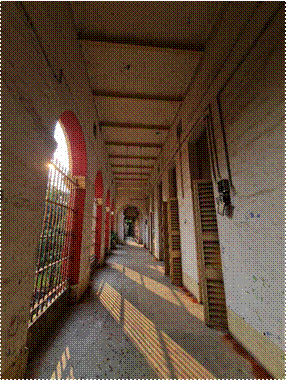
The Alipore Central Jail Hospital has a rich history. Situated outside the jail within its own walled yard, it was built in its present avatar in the 1900s. The likes of Pt. Jawaharlal Nehru and Subhas Chandra Bose are said to have been hosted and treated here. Convicts from other prisons in the state were often directed here for treatment.